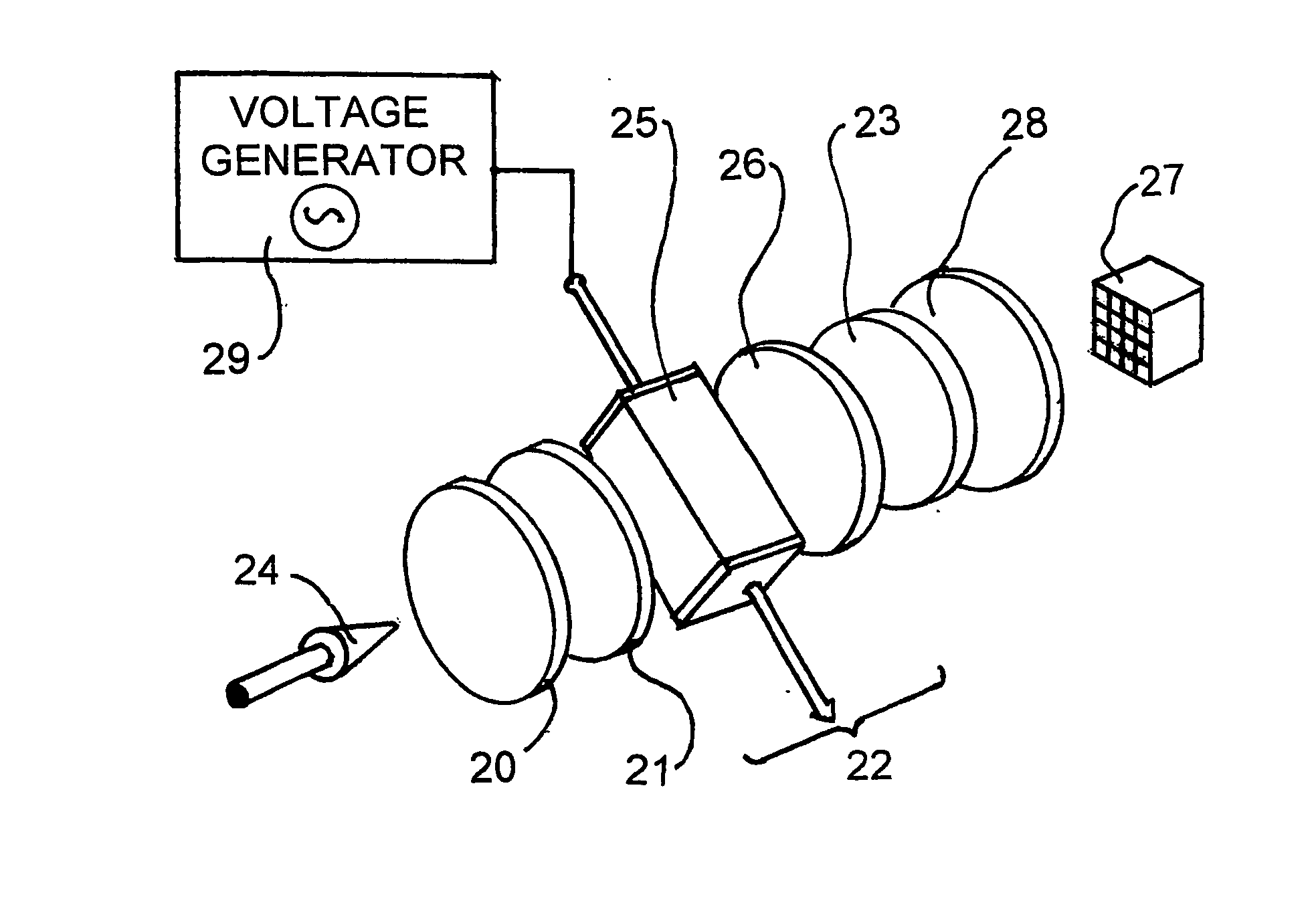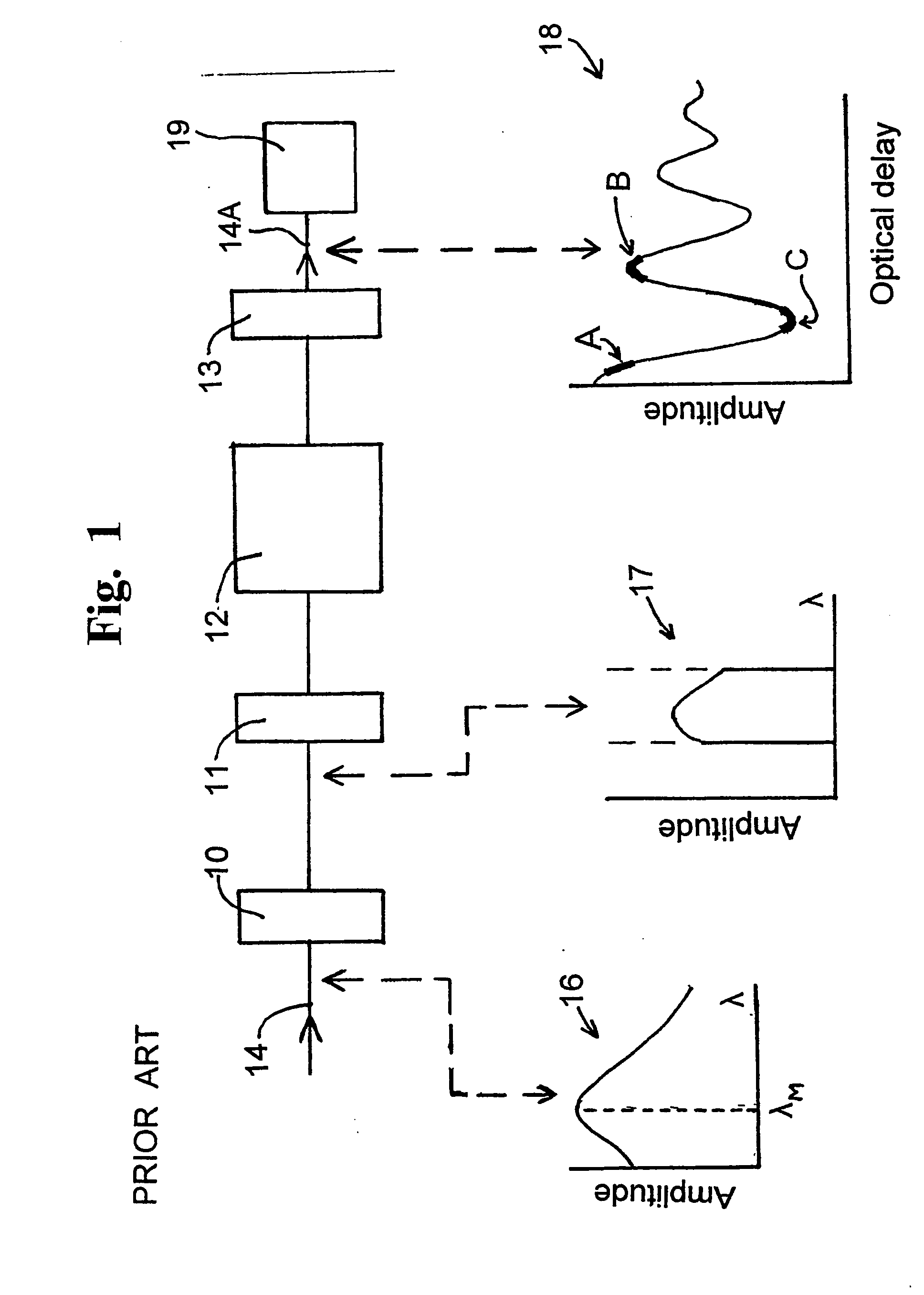Method and apparatus for the estimation of the temperature of a blackbody radiator
a blackbody radiator and temperature estimation technology, applied in the direction of optical radiation measurement, interferometric spectrometry, instruments, etc., can solve the problems of affecting the accuracy of the estimation of the emissivity, the inferred temperature can be substantially in error, and the current ftir spectroscopy does not, so as to improve the signal to noise ratio (snr)
- Summary
- Abstract
- Description
- Claims
- Application Information
AI Technical Summary
Benefits of technology
Problems solved by technology
Method used
Image
Examples
Embodiment Construction
[0060] Part of the emission spectra of several blackbody radiators is shown in FIG. 2. If radiation from these radiators is passed through an electro-optical filter as shown in FIG. 1, with the band pass filter 10 being a top hat band pass electro-optical filter, spanning the range of from 1 to 5 .mu.m, the resultant fringe pattern of the interferogram of the output radiation 15 (shown as a plot of intensity of the received radiation against the delay introduced by the electro-optical filter) is as shown in FIG. 3. FIG. 3 is, in fact, the Fourier transform of the emission spectra of FIG. 2.
[0061] It is clear from FIG. 1 that, as noted above, it is the shape of the interferogram near zero delay that is most closely related to the source temperature. At the offset delay, or operating point, below the first interferogram zero, shown by the region A in the graphical representation 18 of FIG. 1, the slope of the interferogram increases with temperature, while the fringe visibility decrea...
PUM
 Login to View More
Login to View More Abstract
Description
Claims
Application Information
 Login to View More
Login to View More - R&D
- Intellectual Property
- Life Sciences
- Materials
- Tech Scout
- Unparalleled Data Quality
- Higher Quality Content
- 60% Fewer Hallucinations
Browse by: Latest US Patents, China's latest patents, Technical Efficacy Thesaurus, Application Domain, Technology Topic, Popular Technical Reports.
© 2025 PatSnap. All rights reserved.Legal|Privacy policy|Modern Slavery Act Transparency Statement|Sitemap|About US| Contact US: help@patsnap.com



